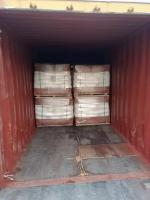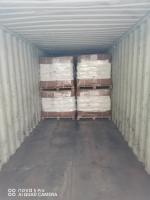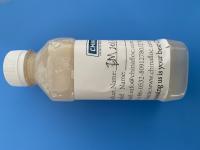Our Products
Polyacrylamide / Cationic Polyacrylamide Powder (AR-4215AP type) can be replaced by Chinafloc C5008

Applications of Cationic Polyacrylamide Powder (AR-4215AP Type)
Introduction
Cationic polyacrylamide (CPAM) is a water-soluble polymer synthesized from acrylamide monomer with cationic functional groups. The AR-4215AP type is a specialized grade of cationic polyacrylamide powder that has optimized molecular weight and charge density to deliver efficient performance in industrial and municipal processes. Its powder form makes it easy to store, transport, and prepare into working solutions. Once dissolved, the polymer demonstrates strong flocculation, retention, and binding properties.
The major application principle of cationic polyacrylamide powder lies in neutralizing negatively charged particles and promoting aggregation, which leads to more effective solid–liquid separation. Because many suspended solids, organic colloids, and industrial by-products carry negative charges, the AR-4215AP type is particularly suitable for wastewater treatment, sludge dewatering, papermaking, and a range of specialized processes.
1. Municipal and Industrial Wastewater Treatment
a. Municipal Sewage Treatment
In municipal sewage plants, wastewater contains large amounts of suspended solids, organic matter, and colloids. AR-4215AP is used during primary clarification and sludge treatment. Its strong cationic charge neutralizes the negatively charged particles present in sewage, causing them to form large, dense flocs. This greatly improves sedimentation speed and effluent clarity.
In sludge handling, AR-4215AP functions as a sludge dewatering aid. When applied before mechanical dewatering equipment such as centrifuges, belt presses, or chamber filter presses, the polymer binds water molecules and fine solids. The result is improved filtration, higher solids content in the sludge cake, and lower disposal costs.
https://youtu.be/W7PuZ3w0pOc
b. Industrial Wastewater
Industrial facilities such as food processing plants, breweries, tanneries, chemical factories, and textile mills generate wastewater rich in oils, fats, and organic pollutants. The cationic polyacrylamide powder is especially effective in these streams because of its affinity for organic colloids. For instance:
-
In food processing wastewater, AR-4215AP accelerates the separation of fats and suspended protein solids.
-
In textile effluents, it improves decolorization and reduces turbidity.
-
In tannery wastewater, it enhances removal of chromium-laden solids and organic impurities.
2. Sludge Dewatering and Conditioning
Sludge treatment is one of the largest application areas for AR-4215AP type CPAM. Biological sludge generated from activated sludge systems is highly hydrated and difficult to dewater. The polymer acts as a sludge conditioner, creating large flocs that release trapped water.
When used in optimal dosages, AR-4215AP significantly reduces sludge volume, lowers energy consumption in drying, and minimizes the cost of final disposal. Its performance is superior compared with many inorganic coagulants because it produces less secondary pollution and is effective even at low dosages.
3. Papermaking Industry
The papermaking industry consumes large amounts of retention and drainage aids. Cationic polyacrylamide powders like AR-4215AP serve multiple roles:
-
Retention Aid: It improves the retention of fillers such as kaolin, calcium carbonate, and titanium dioxide. This not only enhances paper quality but also reduces raw material loss.
-
Drainage Aid: By accelerating water removal on the wire section of the paper machine, it shortens drainage time and increases paper machine productivity.
-
Fixing Agent: AR-4215AP neutralizes and fixes anionic impurities or “anionic trash” present in pulp slurries, such as lignin sulfonates. This improves the efficiency of sizing agents, dyes, and other papermaking chemicals.
-
Paper Strengthening: In specialty papers, the polymer provides internal bonding strength, improving tensile and dry strength properties.
4. Oil and Gas Industry
Although anionic polyacrylamides are often used for enhanced oil recovery, cationic grades like AR-4215AP also find use in the petroleum sector:
-
Produced Water Treatment: In oilfields, produced water contains oil droplets, suspended solids, and colloids. AR-4215AP assists in breaking emulsions and aggregating solids, leading to improved separation of water and oil.
-
Drilling Fluids: It stabilizes water-based drilling muds by flocculating negatively charged clay particles, reducing dispersion and preventing excessive viscosity build-up.
-
Sludge Handling: In refinery wastewater systems, AR-4215AP is applied in sludge dewatering processes, minimizing disposal costs.
5. Mining and Mineral Processing
Mining operations generate large amounts of tailings and fine suspensions. Cationic polyacrylamide powder like AR-4215AP is particularly suited for processing slurries with organic content or where negatively charged fines predominate.
-
Tailings Dewatering: It improves thickener performance, accelerates sedimentation, and produces clear overflow water for recycling.
-
Coal Preparation: In coal washing plants, AR-4215AP helps recover fine coal particles, enhancing yield and reducing losses.
-
Metal Ores: It supports clarification in processes involving phosphate, alumina, and gold mining effluents.
6. Textile and Dyeing Industry
The textile sector discharges effluents with dyes, organic additives, and suspended solids. AR-4215AP is used as:
-
A decolorizing flocculant, aggregating dye molecules into flocs that are easier to filter or settle.
-
A sludge dewatering aid for dyehouse sludge.
-
A chemical fixative, improving dye exhaustion and reducing residual color in wastewater.
Its strong cationic charge makes it especially useful for treating wastewater containing reactive and direct dyes, which are often highly soluble and difficult to remove.
7. Chemical and Pharmaceutical Industries
In chemical production, wastewater streams contain fine particles, emulsions, and organic residues. AR-4215AP improves clarification efficiency in processes involving:
-
Pharmaceutical production effluents rich in organic compounds.
-
Fine chemical wastewater that contains emulsified oils and surfactants.
-
Fermentation industries, where organic colloids interfere with separation.
8. Agriculture and Soil Improvement
Although less common than in industrial use, cationic polyacrylamide powders can be applied in agriculture to stabilize soil, reduce erosion, and improve water retention. AR-4215AP helps bind negatively charged soil particles, preventing runoff and improving infiltration. It is particularly effective in areas prone to soil erosion due to irrigation or rainfall.
9. Environmental and Ecological Applications
Cationic polyacrylamide powders are also utilized in environmental restoration:
-
River and lake remediation projects to reduce turbidity by aggregating fine clays and organic matter.
-
Stormwater treatment systems, where AR-4215AP accelerates settling of suspended solids, ensuring compliance with discharge standards.
-
Solid waste leachate treatment, improving separation of colloids in landfill leachates.
Advantages of AR-4215AP Type
-
High Efficiency: Requires low dosage to achieve significant flocculation.
-
Versatility: Suitable for diverse wastewater and sludge types.
-
Powder Form: Easier storage and transport compared to emulsions.
-
Reduced Secondary Pollution: Produces less sludge than inorganic coagulants.
-
Wide pH Tolerance: Effective in both acidic and neutral wastewater conditions.
Conclusion
Cationic Polyacrylamide Powder (AR-4215AP type) is a versatile and highly effective flocculant designed for industries that require reliable solid–liquid separation. Its strongest applications are found in municipal wastewater treatment, industrial effluent treatment, sludge dewatering, papermaking, mining, textiles, oil and gas, and environmental projects.
By neutralizing negative charges and forming strong flocs, AR-4215AP significantly improves clarification, sludge management, and process efficiency. In today’s industries where sustainability, cost reduction, and environmental compliance are critical, AR-4215AP continues to provide an indispensable solution for water treatment and resource recovery.





976_small.jpg)